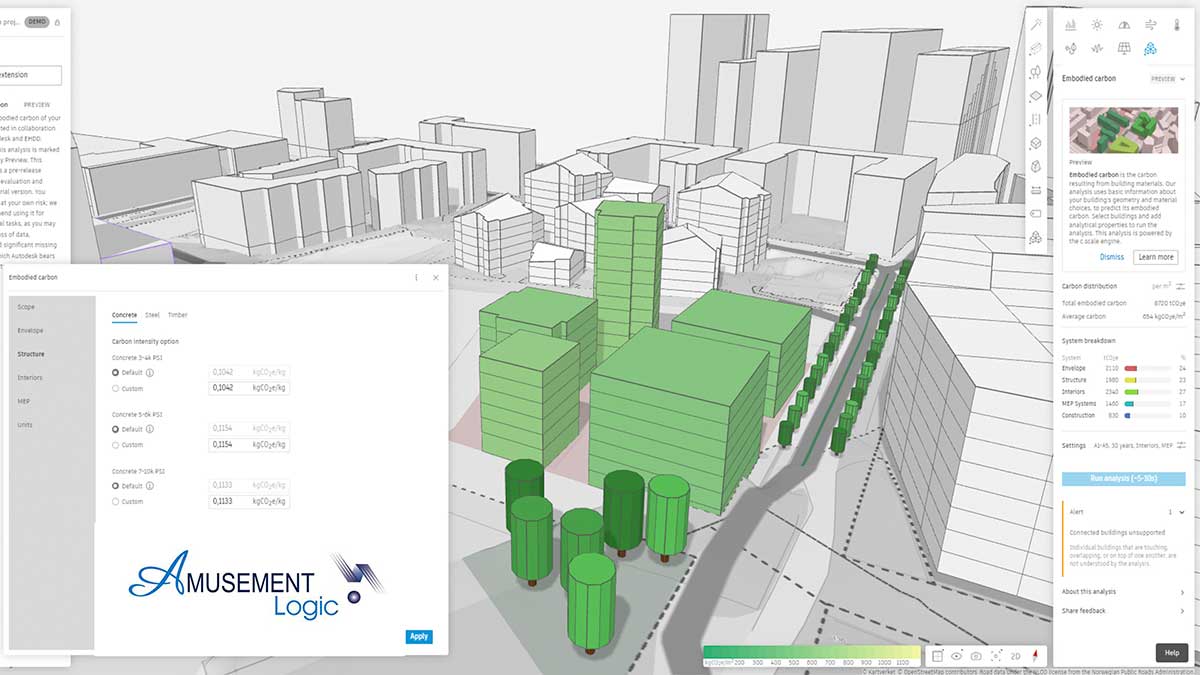In architecture, decisions about the shape, structure and primary materials of a building are mainly made during the initial design and planning phases. However, these decisions will later have a major effect on the size of the carbon footprint of its construction. If these decisions are made during the later or final phases of a project, they are likely to be limited in their scope for footprint reduction, or tedious and/or costly to implement.
Therefore, carbon footprint predictions based on data obtained during the preliminary stages of the conceptual design of a building or project will be of great use to the architectural firm. Instead of waiting for reports or resorting to costly simulations, programming tools are now available within the BIM (Building Information Modelling) environment to perform an ‘informed design’ of the building. Therefore, during the initial decision-making process, it will be possible to adopt carbon footprint minimisation criteria to determine the design alternatives.
To perform this type of analysis, we now have the artificial intelligence (AI)-based API (Application Programming Interface) C.Scale from the architecture firm EHDD Architecture. With this interface, we can easily evaluate different design concepts in terms of the greenhouse gas emissions they will produce during the construction process.

Running the software’s built-in analysis of the design’s future carbon emissions provides almost instantaneous results. These results also include, in addition to its construction, the carbon footprint embodied in the building’s life cycle, expressed in tCO2e (or tonnes of CO2 equivalent, which is calculated by multiplying the activity data by emission factors). We also obtain graphical visualisations, such as colour-coded buildings that break down the carbon intensity by category of the specified parameters.
From this data, the architectural team can compare building design alternatives and chosen parameters before deciding on a final concept. And always with the criterion that the carbon footprint metrics are more in line with the efficiency and sustainability objectives of the project.
By David González Molina, BIM manager in the Architecture Department of Amusement Logic






